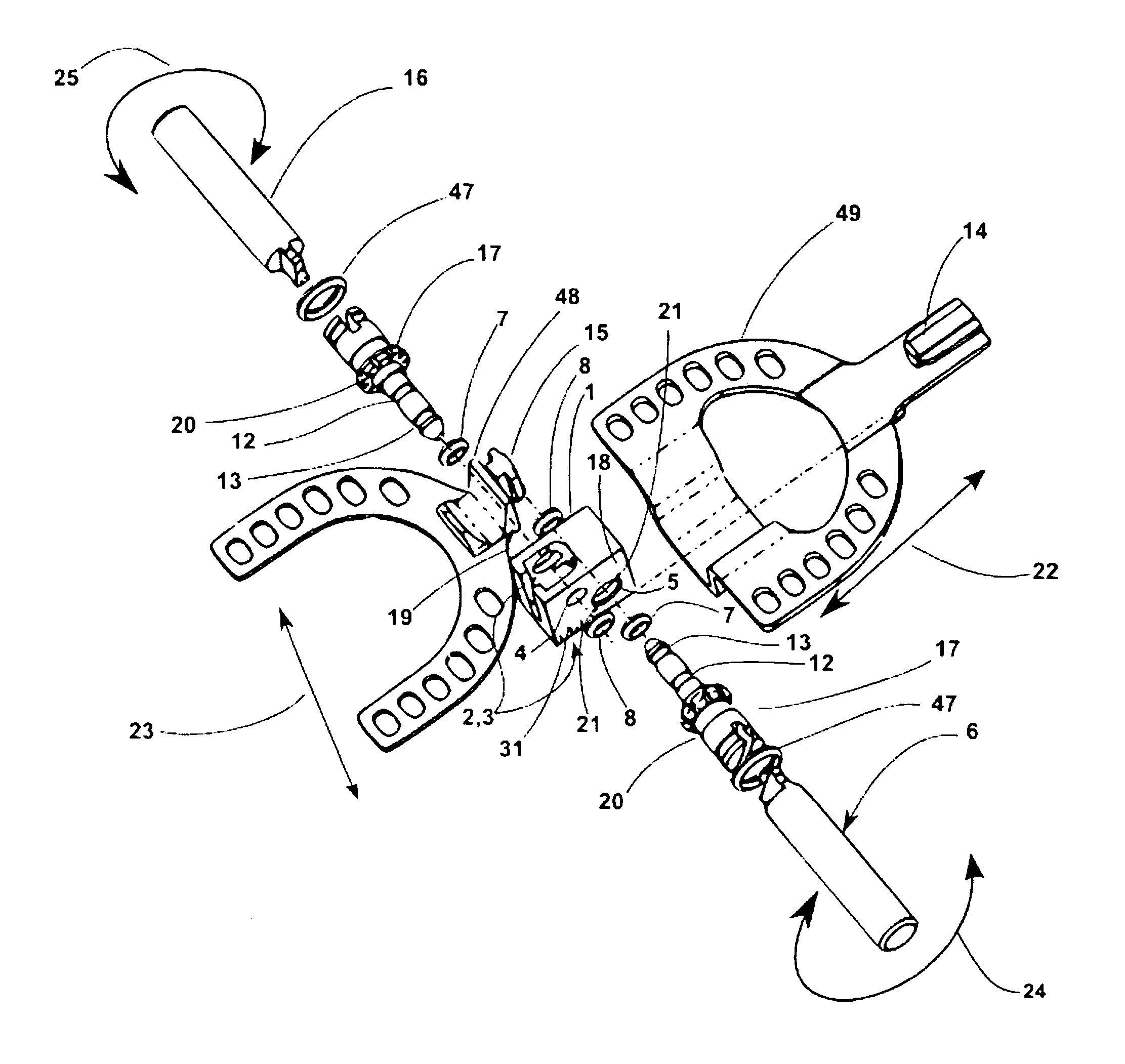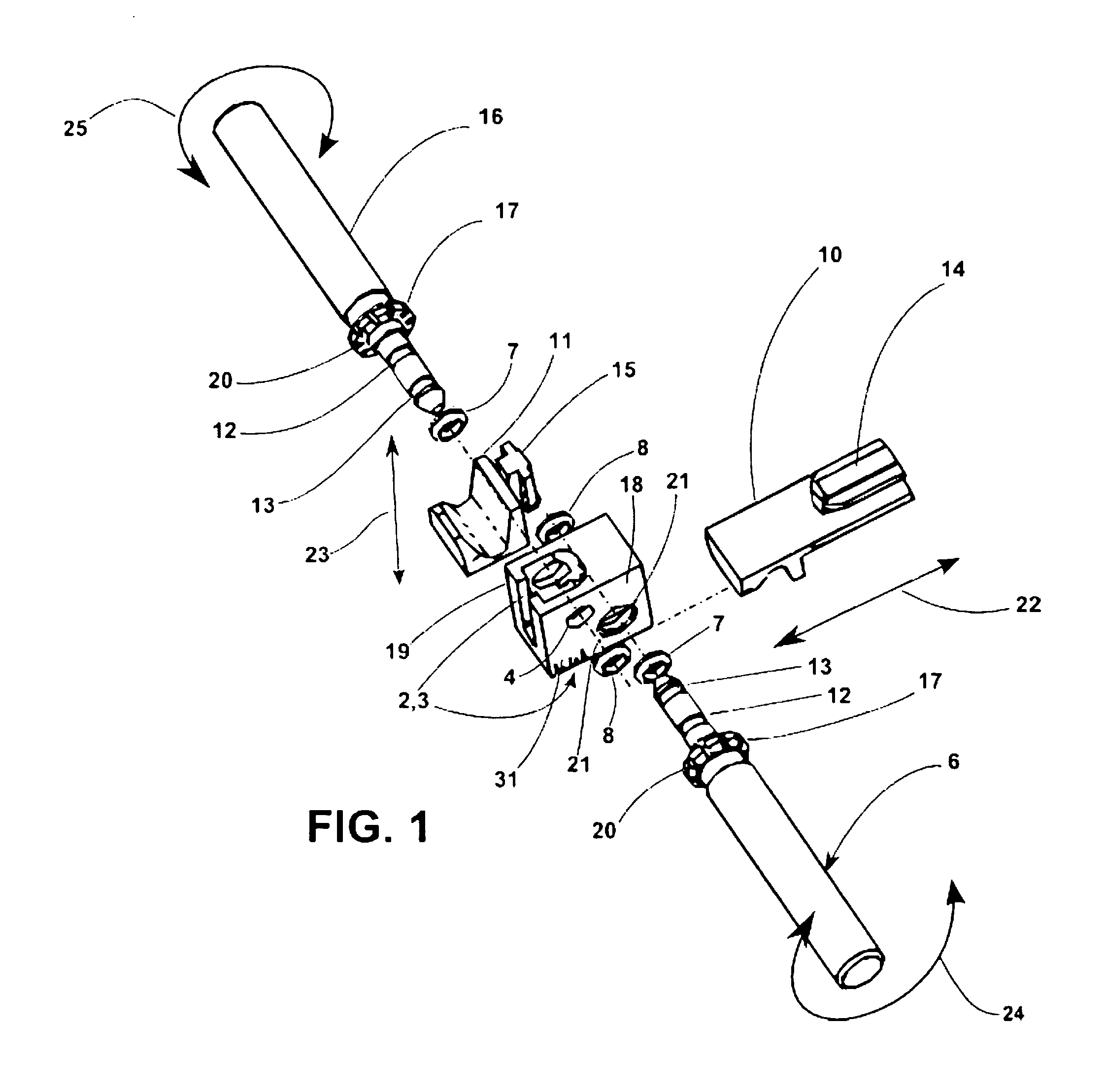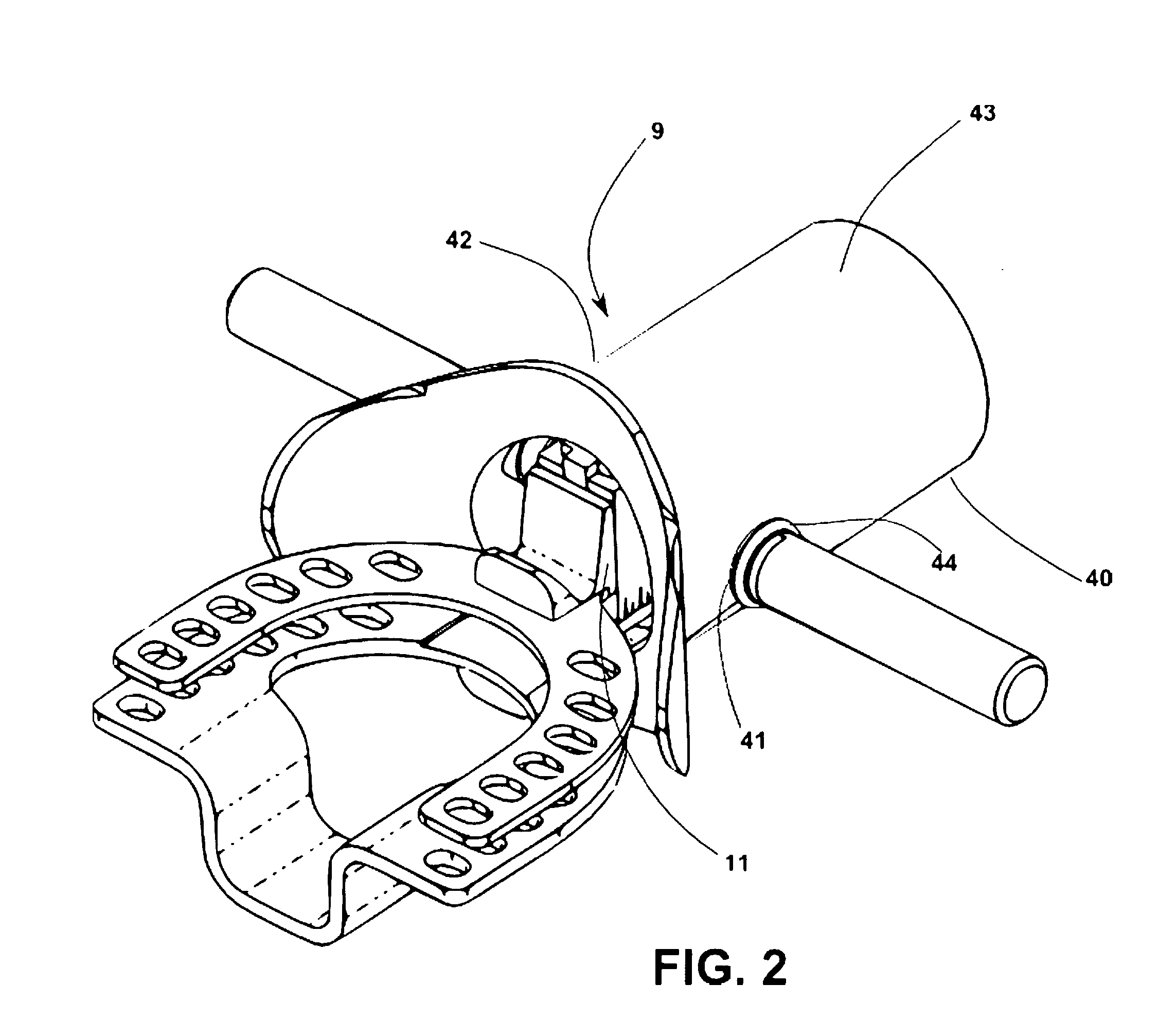Mandibular manipulator
a manipulator and mandibular technology, applied in the field of mandibular manipulators, can solve the problems of increasing diagnosis time, error method not being used, and present methods lack the precision and repeatability needed to analyze patients in real tim
- Summary
- Abstract
- Description
- Claims
- Application Information
AI Technical Summary
Benefits of technology
Problems solved by technology
Method used
Image
Examples
Embodiment Construction
[0043]The following terminology is used herein:
[0044]Dental Articulator Mechanical instruments that simulate the temporomandibular joints and jaws to which maxillary and mandibular casts are attached. The entire assembly attempts to reproduce the movements of the mandible and the various tooth-to-tooth relationships that accompany those movements.
[0045]Maxilla: anatomy; of a pair of bones of the human skull fusing in the mid line and forming the upper jaw.
[0046]Dental: The irregularly shaped bone forming half of the upper jaw. The upper jaw is made up of the two maxillae.
[0047]Incisal edges of the lower to upper central incisor teeth.
[0048]Anteroposterior: Anatomical term referring to an axis and for the purpose of this application defines an axis from front to back of the mouth.
[0049]Sagittal: A vertical plane passing through the standing body from front to back.
[0050]With reference now to FIGS. 1, 2, and 3, arrow 9 shows the overall mandibular manipulator as a self-contained unit ...
PUM
 Login to View More
Login to View More Abstract
Description
Claims
Application Information
 Login to View More
Login to View More - R&D
- Intellectual Property
- Life Sciences
- Materials
- Tech Scout
- Unparalleled Data Quality
- Higher Quality Content
- 60% Fewer Hallucinations
Browse by: Latest US Patents, China's latest patents, Technical Efficacy Thesaurus, Application Domain, Technology Topic, Popular Technical Reports.
© 2025 PatSnap. All rights reserved.Legal|Privacy policy|Modern Slavery Act Transparency Statement|Sitemap|About US| Contact US: help@patsnap.com



